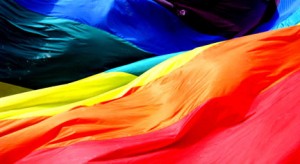
As Minnesota gears up to debate increasing the state’s minimum wage, its an issue that could be on the LGBT community’s radar
Minnesota has the lowest minimum wage in the Upper Midwest at $6.15 an hour, well below the federal level of $7.25 an hour (though most Minnesota employees have to follow the federal rate). Gov. Mark Dayton and some DFL leaders are looking to pass a new minimum wage this year that would gradually rise to $9.50 an hour and increase with inflation.
There is no data on what percent of Minnesotans working at minimum wage are LGBT, because the LGBT community often gets left out of data collection on income. But a few recent surveys give a snapshot of how Minnesota’s LGBT community is faring economically.
In 2010, Hennepin County conducted a health survey of county residents. The survey asked questions on a few important economic issues.
In terms of health economics, LGBT residents were more likely to be uninsured (10.6 percent vs. 6.4 percent for the general population), more likely to be without insurance in the previous year (20 percent vs. 12 percent), and more likely to have no regular source of care (33.9 percent v. 28,3 percent). LGBT residents delayed or did not get needed medical care more often than the general population (26.4 percent vs. 15.5 percent) and delayed or did not get needed mental health care (33.3 percent vs. 13.7 percent)
In terms of other economic indicators, LGBT residents fairly just as poorly. 19.4 percent worried that food would run out before had money to buy more sometimes or often during the past 12 months compared to 13.3 percent for the general population.
11.4 percent of LGBT residents missed a rent or mortgage payment during the past 12 months because did not have enough money compared to 8.4 percent of the general population. 15.5 percent of LGBT residents reported residential instability versus 9.3 percent.
An equal percent of LGBT residents and the general population of Hennepin County receive public assistance at 8.2 percent.
The authors noted:
Further data analysis on housing and food insecurity found that there was an increase in food insecurity rates between 2006 and 2010 for both LGBT residents and non-LGBT residents. However, the size of the increase is much greater among LGBT residents, especially for older LGBT residents. Similar results are found in housing insecurity for older LGBT residents.
According to a 2011 survey by the National Gay and Lesbian Task Force, transgender Minnesotans had 3 times the rate of poverty compared to the general population. 13 percent had incomes under $10,000 compared to 4 percent of Minnesotans. 12 percent were unemployed compared to 7 percent in the nation at the time of the survey.
On the national scale, those trends appear to be the same.
“I think people are surprised there are any poor gay people,” M.V. Lee Badgettof the The Williams Institute told NBC last year after the institute released a report on LGBT income. “This ‘myth of gay affluence’ has been around for a long time. It gets in the way of people even imagining that LGBT people can be poor.”
The Williams Institute has noted multiple disparities for LGBT Americans. It found:
• In the American Community Survey, 7.6% of lesbian couples, compared to 5.7% of married different-sex couples, are in poverty.
• African American same-sex couples have poverty rates more than twice the rate of different-sex married African Americans.
• One third of lesbian couples and 20.1 % of gay male couples without a high school diploma are in poverty, compared to 18.8% of different-sex married couples.
• Lesbian couples who live in rural areas are much more likely to be poor (14.1%), compared to 4.5% of coupled lesbians in large cities. 10.2% of men in same-sex couples, who live in small metropolitan areas, are poor, compared with only 3.3% of coupled gay men in large metropolitan areas.
• Almost one in four children living with a male same-sex couple and 19.2% of children living with a female same-sex couple are in poverty, compared to 12.1% of children living with married different-sex couples. African American children in gay male households have the highest poverty rate (52.3%) of any children in any household type.
• 14.1% of lesbian couples and 7.7% of gay male couples receive food stamps, compared to 6.5% of different-sex married couples. Also, 2.2% of women in same-sex couples receive government cash assistance, compared to .8% of women in different sex couples; 1.2% of men in same-sex couples, compared to .6% of men in different-sex couples, receive cash assistance.
In late 2012, Gallup surveyed LGBT Americans on a range of topics, including income. What gallup found was that LGBT Americans are poorer than the general population. 35 percent of LGBT Americans make less than $24,000 a year compared to just 24 percent of the general population. LGBT Americans are also more likely to be less satuisfied with their standard of living. 65 percent of LGBT individuals said they were satisfied with their standard of living compared to 73 percent of all Americans.
The Movement Advancement Project looked at poverty rates for older LGBT individuals and found that older gay and especially lesbian couples are more likely to be poor.
This research demonstrates that the myth of a wealthy LGBT is just that: a myth. Economic policies to help poor Minnesotans — such as an increase in minimum wage — would appear to help LGBT Minnesotans at a disproportionate rate.
